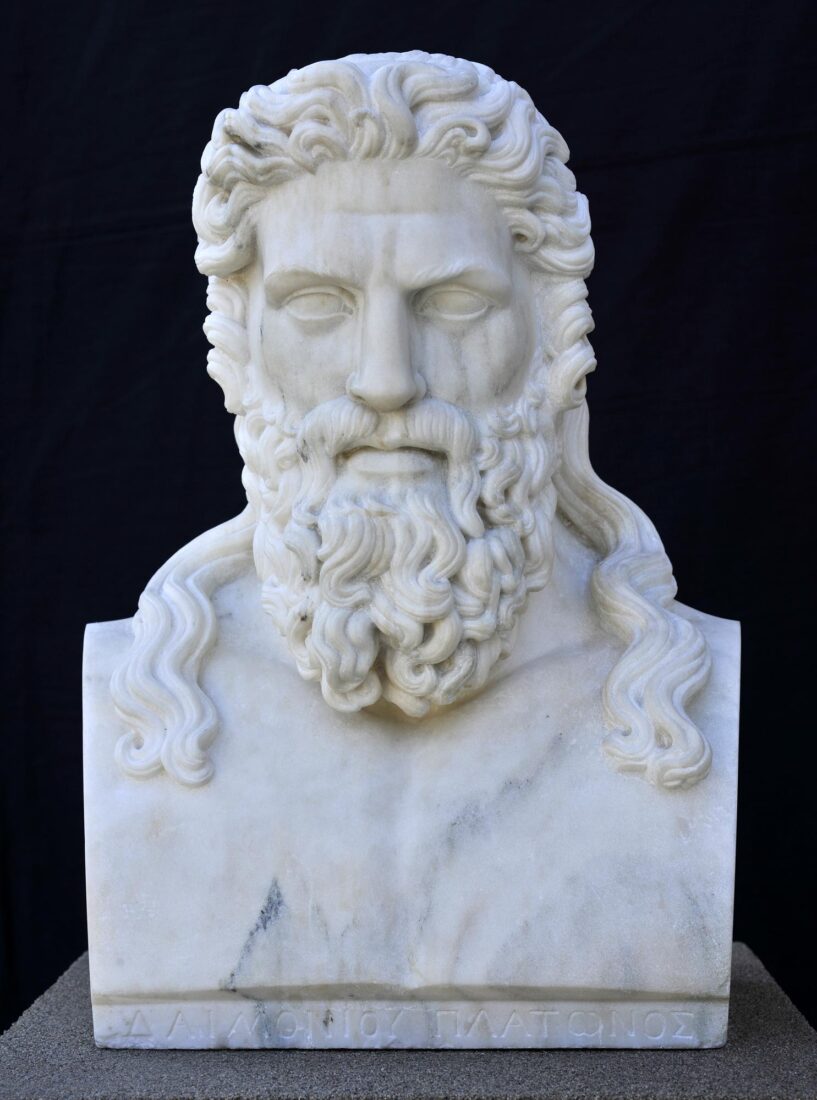We use cookies to make our site work properly, to personalize content and ads, to provide social media features and to analyze our traffic. We also share information about how you use our site with our social media, advertising and analytics partners. Read the Cookies Policy.

Prossalentis Pavlos the Elder (1784 - 1837)
Plato, 1815
Marble, 46 x 34 x 24 cm
Permanent loan from the Numismatic Museum
Sculpture appeared as an autonomous art form in Greece in the Ionian Islands at the beginning of the 19th century. Corfu native Pavlos Prosalent, the Elder the first Greek sculptor with academic training. He studied at St. Luke’s Academy in Rome and was responsible for bringing neoclassical teachings to the Ionian Islands.
His bust of Plato is one of the first works of his mature period. In fact, the sculptor has engraved an inscription on its side that proudly declares it to be the first bust in modern Greek art. The figure of the ancient philosopher is rendered with a serious, pensive gaze, a broad, clear forehead, strongly chiseled characteristics, a full, well-groomed beard, and long hair. Prosalentis has carved an idealized figure more divine than human, in keeping with neoclassical ideals. This divine aspect is accentuated by the ribbon tied around the head and by the inscription “Daimonios”, meaning divine.

